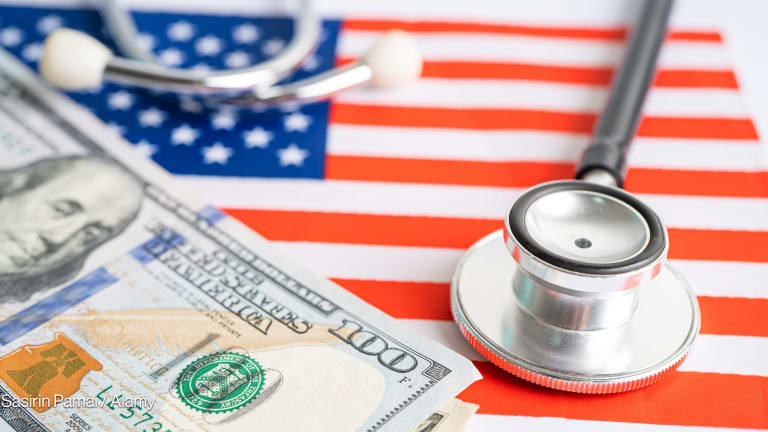
Across the world, COVID-19 has put the resilience of national health systems to a painful test. As we all race to respond, procurement has emerged as a key challenge.
From personal protective equipment to test kits and clinical care equipment, the problem is familiar: Supplies are low, demand is high, and time is not on anyone’s side.
COVID-19 disruptions on health supply chains a challenge for aid orgs
Health organizations have enough stocks in place to continue with their programs so far, but what happens in the long term?
Even the most advanced countries face a highly volatile market for medical supplies and equipment, due to high demand and a limited supply chain. This is further challenged by ever-changing logistical and transportation restrictions, national export controls, and manufacturers facing their own struggle to remain operational during government lockdowns.
Countries with weaker health systems are far more vulnerable. Slow, outdated, and opaque procurement systems, coupled with low capacity and a lack of data, are seriously hindering response efforts.
“Pandemic or not, procurement practices need to remain transparent and accountable.”
—For many of us, this is not all new. I know about these challenges because the United Nations organization that I lead — the United Nations Office for Project Services, or UNOPS — has a mandate to procure: to run the processes that mean goods and services arrive fast, meet needs, and are high quality.
When the world was dealing with swine flu in 2009 — a pandemic across 214 countries and territories that lasted over a year — hundreds of millions of vaccine doses were delivered around the world. During the catastrophic cholera outbreak in Haiti, we supplied the urgently needed cholera kits. And since the Ebola outbreak, rebuilding national health care systems across Sierra Leone has been a goal. Today, of course, COVID-19 is the core focus of many organizations globally.
So what does it actually take to ensure the supply of medical needs in a pandemic? And what can we learn from the coronavirus response to date? Here is where we would start:
Context. This may sound obvious, but it is crucial to understand the local context and needs before coming up with a procurement strategy. What is it that must be addressed, and what do communities require to be able to do this? What is the best way to buy these things? And how do we get items to them in the safest, quickest way?
Flexibility. In the face of a situation that changes by the day, it is crucial to be flexible and adapt quickly. Public procurement processes need to be designed for this. They should allow for maximum flexibility and agility in emergency situations, while being sustainable and obtaining value for money.
Transparency. Don't be afraid to rewrite the rules, especially when lives are at stake. But pandemic or not, procurement practices need to remain transparent and accountable. They need to have the best interests of communities in mind and make the best use of public money.
Suppliers. Having strong supplier bases and effective supplier search tools is key to ensure access to local, regional, and international markets. UNOPS does this through its own e-commerce platform called UN Web Buy Plus. Think of it as an Amazon for the U.N., but one where you can buy ambulances, transportable biosafety labs, mobile health clinics, and prefabricated buildings that can be used as temporary health facilities, among other things.
Supply chains. Ensuring that final deliveries make it to wherever they are needed is an evermore challenging task today with the disruption of most supply chains. This is a delivery puzzle — quality control, inspections, distribution, warehousing inventory management — but every piece must fit or there is no result.
Innovation. The scale of this crisis means that the response cannot come from governments alone. We are all in this together, and we can only overcome this together. Governments, the private sector, and civil society all need to collaborate for the response to work.
Around the world, examples abound of how businesses — big and small — are finding ways to tackle the pandemic, from donating sanitizers to building ventilators and funding emergency relief. More such innovative partnerships are needed in emergency health procurement.
Sustainability. Importantly, our response to this crisis needs to have environmental and social sustainability at its heart. COVID-19 highlights and exacerbates the existing inequalities in our world. The most vulnerable will be the worst hit.
Inadequate emergency responses in the past have led to further crises. Unsustainable waste management in the aftermath of the 2010 Haiti earthquake, for example, contributed to a cholera outbreak.
So as we combat COVID-19, we should wage a war not only on the virus but also on the inequality that has exacerbated its impact. From waste management to supporting local communities and keeping gender equality at the heart of our work, procurement practices have a key role to play in ensuring sustainable supply chains that benefit everyone.
How we respond to this crisis — both now and in the long term — will be key to rebuilding our societies in the years to come. Governments currently need support, solidarity, and cooperation, but as our world emerges from this pandemic, there are many lessons to be learned.
A crucial one is the need to build resilient health systems that can cope with the stress of future pandemics and other health threats. With estimates suggesting that one-fifth of all health spending across the world could be put to better use, COVID-19 is teaching us a lot about more effective health procurement and the value of supply chains.








